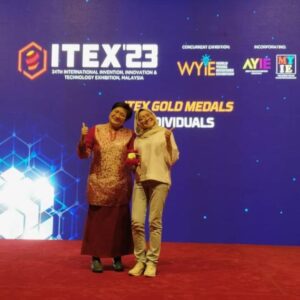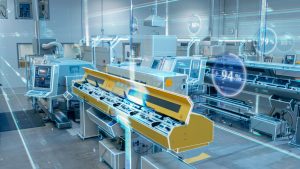Clearing and Settlement using Blockchain
Bank transfers usually take about 3 days to process. A period of time that barely corresponds to the current pace of the world we live in. Not only does this frustrate the customer, it frustrates the bank itself.
The fact that the average bank transfer takes three days to process has a lot to do with how our financial infrastructure is built. To make a bank transfer, you have to go through an intermediary’s system. This may include correspondent banks, custodians and other financial institutions acting as intermediaries. A simple bank transfer from one account to another must bypass a complex intermediary system before reaching its destination. Extensive involvement of middlemen is costly and risky as each intermediary adds fees and potential errors to the transaction. Not to mention the extra time each institution takes to get the transfer through.
If you want to send money from your UniCredit Banca account in Italy to your Wells Fargo bank account in the United States, the transfer is processed through the Society for Worldwide Interbank Financial Communication (SWIFT), sending 44.8 million messages per day to an additional 11,000 financial institutions.
UniCredit Banca and Wells Fargo do not have an established financial relationship, so you will need to search the SWIFT network for a correspondent bank that has a relationship with both banks and can process the transaction for a fee. Each correspondent bank maintains separate ledgers for the sending and receiving banks. In other words, these different ledgers have to be reconciled at the end of the day.
The centralized SWIFT protocol does not actually send funds. Send payment instructions only. Real money is processed through a system of intermediaries. Each middleman adds additional costs to the transaction and creates potential points of disappointment.
By using distributed ledgers, banks can track all transactions more efficiently, speeding up the overall process. Instead of relying on SWIFT, banks can process transactions directly through the blockchain network. An interbank blockchain can be used to track all transactions publicly and transparently. In this way, banks can enjoy reduced processing fees and better service to their customers at the same time without having to rely on a network of custodians or correspondent banks.
Additionally, blockchain technology allows for “atomic” transactions, i.e. transactions that are settled when payment is made. This is in contrast to current banking systems that settle transactions days after the payment is made. This reduces the high costs of maintaining a global network of correspondent banks. An Accenture study of eight global banks found that blockchain technology could reduce the average cost of clearing and settling transactions by $10 billion annually.

Examples of improved transactions through blockchain
Ripple, a provider of enterprise blockchain services, is one of the most prominent players in the clearing and settlement space. The company is best known for its related cryptocurrency, XRP, but the venture-backed firm is developing blockchain-based solutions that banks can use for payments and settlements.
SWIFT messages are one-way, like email. This means that a transaction cannot be settled until each party has confirmed the transaction. By integrating directly with banks’ existing databases and ledgers, Ripple provides banks with a high-speed two-way communication protocol that enables real-time messaging and payments. Ripple now has over 300 of his customers in over 40 countries who have signed up to experiment with its blockchain network.
Ripple also helps in processing cross-border transactions in less time. If a Mexican merchant wants to send money to a US counterpart, traditional banking requires that both merchants have local currency accounts in the country where they want to receive the money. Ripple eliminates this requirement. A Mexican trader can easily buy her XRP tokens through exchanges using Mexican Pesos to pay their American counterparts. US traders can exchange these XRP tokens for dollars. And this entire transaction could happen in an instant, claims Ripple.
R3 is another big company working on distributed ledger technology for banks. It is to become “the new operating system of financial markets”. In May 2017, he raised $107 million from a banking consortium including Bank of America, Merrill Lynch and HSBC, but also lost key members such as Goldman Sachs. R3’s technology was used by the Swiss National Bank for a pilot project to process large-scale transactions between financial institutions using digital currency. The Swiss National Bank (SNB) announced in December 2020 that the project, called Project Helvetia, was a success. SNB successfully completed Phase II of the project in January 2022, testing the digital currency for transaction processing with five commercial banks.
Additionally, in 2021, R3 announced a partnership with the Singapore-based ASEAN Financial Innovation Network. The aim of this cooperation is to enable financial service providers to develop digital currency applications for central banks. We have too collaborated with OneHypernet to create a multi-country blockchain netting arrangement for pooling stores and making installments effortlessly. Projects such as Ripple and R3 are working with traditional banks to make the sector
more efficient. They seek to decentralize the system on a smaller scale than public blockchains, connecting financial institutions to the same ledger to increase transaction efficiency. Blockchain technology is also playing a role in politics. Following sanctions banning Russian banks from his SWIFT system, a Russian company is reportedly developing alternatives to his SWIFT blockchain. However, financial experts say the chances of it replacing SWIFT are slim.
Blockchain projects don’t just make existing processes more efficient while they are still in their early stages, mostly seen as experiments, pilot projects, and proofs of concept (PoCs), they are creating entirely new types of financial activity. The fundraising space is a prominent example of this.







